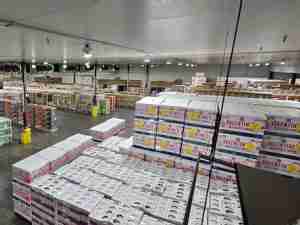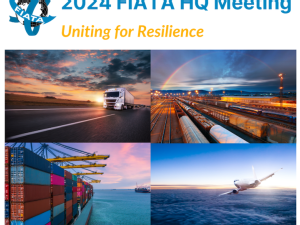DHL delivers greater carbon emissions transparency
posted by AJOT | Mar 07 2014 at 12:48 PM | Logistics
DHL Global Forwarding, Freight, the air and ocean freight specialist within Deutsche Post DHL and one of the leading providers of road freight services in Europe, further expands its portfolio of carbon reporting services for transports. The company adopted the Greenhouse Gas Protocol “Product Lifecycle Accounting and Reporting Standard” for Carbon Reports, launched a new web platform called “DHL Carbon Dashboard 2.0” and unveiled “Quick Scan”, which measures enterprises carbon efficiency and compares it with industry benchmarks. Besides the new standard options of the Carbon Report and the Dashboard, there is now also an advanced version for both available, including new reporting items and better visualization of CO2 transport data.
“We expect that the regulations for carbon reporting will further increase over the next years. Our new GoGreen service portfolio help companies to gain emission transparency, find options for efficiency improvements, potential cost savings and neutralize their emission impact,” says Roger Crook, CEO DHL Global Forwarding, Freight.
The implementation of the Greenhouse Gas Protocol “Product Lifecycle Accounting and Reporting Standard” allows DHL to include data on other greenhouse gases into the calculations, such as methane, nitrous oxide and other pollutants. Additionally, upstream emissions generated by the production and transport of energy and fuel are also considered now.
At the core of DHL Global Forwarding, Freight’s green service portfolio is the Carbon Dashboard 2.0, an IT application that provides customers substantial information on emission sources from their supply chain in an effective visual format. The tool’s transparency allows conducting analysis on country, regional and trade lane level. The new 2.0 version helps logistics decision makers to identify carbon emission pain points and cost improvement areas regarding decisions on transport modes and freight density.
“For companies using DHL Global Forwarding’s carbon reporting services, or have not yet taken this first step to make their supply chains “greener,” this browser-based customer interface has been enhanced to easily visualize the impact and manage air and ocean shipments’ carbon emissions,” said Alejandro Palacios, regional head of Business Strategy and Performance Management. “It serves as a one-stop shop for businesses that are ready to take serious steps to improve the efficiency of their supply chains.”
A part of DHL’s analytic capabilities is a new service called Quick Scan, which measures a company’s carbon efficiency by taking pre-defined key performance indicators into account and comparing them with industry benchmarks. The results also include an overview of key carbon improvement areas, which allows customers to determine if they need to implement changes to their supply chain to gain efficiency. Quick Scan is a segment of Green Optimization, which comprises DHL’s offerings of analytical deep dives, studies and benchmarking reports.
The overall green service portfolio now comprises a broad range of services, among them two alternative Carbon Reports and three variants of the Carbon Dashboard (standard, advanced, and 3rd party), which are verified by third party auditors. Moreover, DHL offers its Green Optimization segment for studies and benchmarking reports and Climate Neutral, which enables customers to neutralize carbon emissions via carbon credits.









